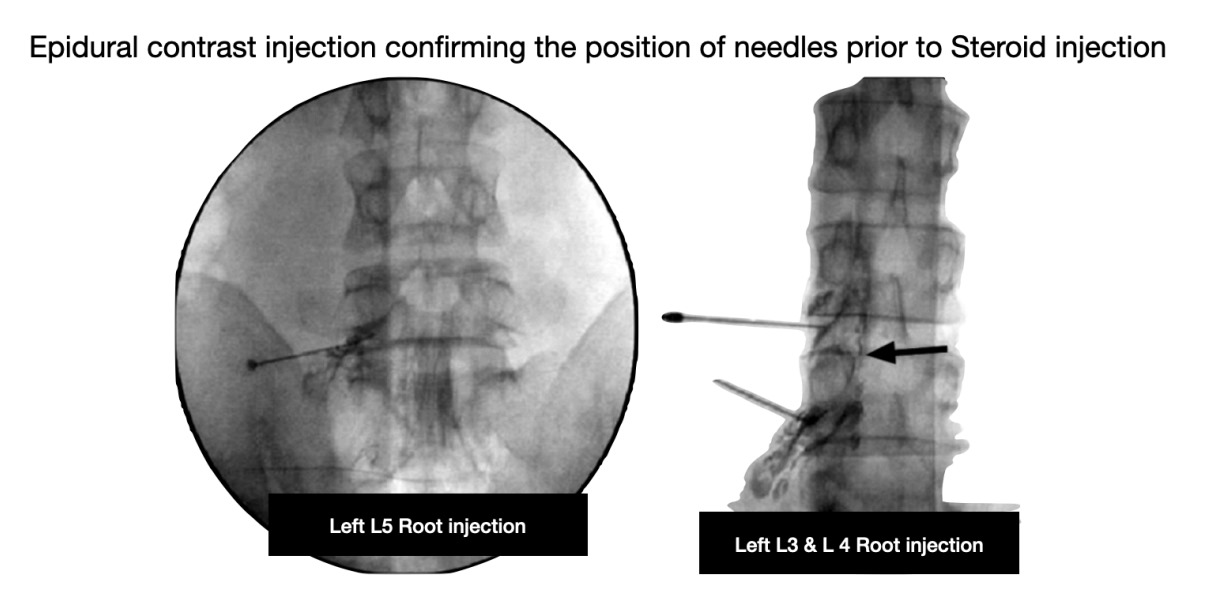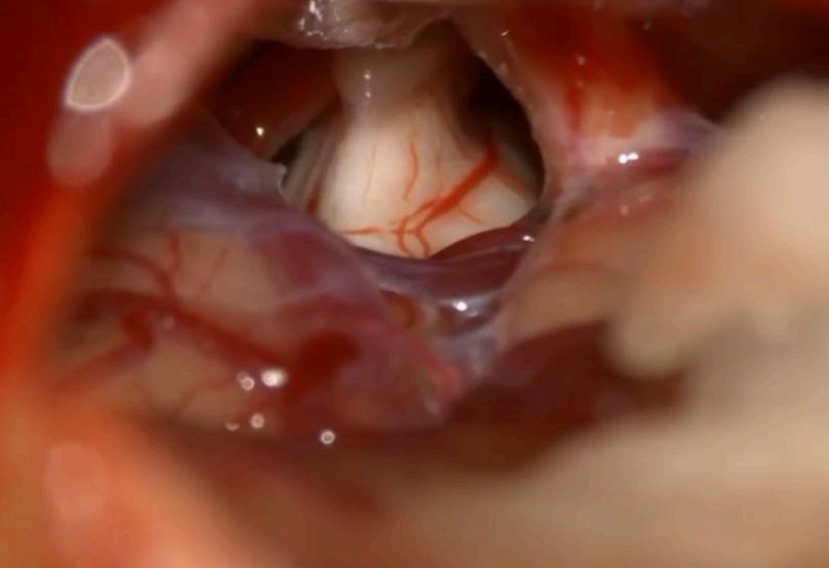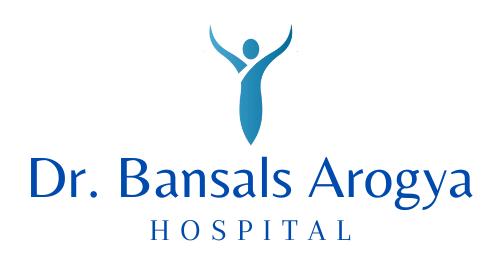Pain Management
Medical Laboratory And Specialists Services
What is Pain Management?
Pain is an inherent part of the human experience, and it can arise from various causes, including injuries, medical conditions, and chronic ailments. Pain can significantly impact an individual’s quality of life, affecting their physical and emotional well-being. Pain management encompasses a range of techniques and treatments aimed at relieving pain and improving overall well-being. In some cases, when conservative approaches are insufficient, pain management surgery may be considered to address the underlying causes of pain. Here, we explore the significance of pain management and the treatments for providing relief to those suffering from acute and chronic pain.
Importance of Pain Management:
Pain management is a vital aspect of healthcare that addresses the physical, emotional, and
psychological aspects of pain. Uncontrolled pain can lead to a host of negative consequences, including reduced mobility, impaired sleep, anxiety, depression, and decreased overall functioning. By adopting a comprehensive approach to pain management, healthcare professionals aim to not only alleviate pain but also enhance the individual’s overall well-being and quality of life.
Benefits of Pain Management:
- Improved Quality of Life: Effective pain management can significantly enhance the quality of life for individuals experiencing chronic or acute pain. By alleviating pain, patients can regain their ability to perform daily activities, engage in hobbies, and enjoy social interactions.
- Enhanced Physical Functioning: Pain management techniques, such as physical therapy and joint replacement surgery, can improve physical functioning and mobility. Patients can experience increased strength, flexibility, and range of motion, enabling them to lead more active and fulfilling lives.
- Emotional Well-being: Chronic pain can take a toll on an individual’s emotional health, leading to anxiety, depression, and feelings of hopelessness. By addressing pain and providing emotional support, pain management can positively impact an individual’s mental well-being.
- Reduced Reliance on Medications: Non-surgical pain management techniques, such as physical therapy, can reduce the need for long-term pain medication use, minimizing the risk of dependency and potential side effects.
- Faster Recovery: Pain management surgery, when appropriate, can lead to faster recovery times, allowing patients to return to their regular activities and work sooner.
- Tailored Treatment Plans: Pain management takes an individualized approach, considering the unique needs and circumstances of each patient. This ensures that treatment plans are customized to address specific pain conditions effectively.
Finding Relief for various types of Pain
Neck pain, low back pain, joint pain, and facial pain are common types of discomfort that affect millions of people worldwide. These types of pain can arise from various causes, such as muscle strain, injury, arthritis, nerve compression, or chronic conditions. Effective pain management is essential for improving quality of life, restoring functionality, and reducing the impact of these painful conditions. Here, we will explore different pain management strategies tailored to address neck pain, low back pain, joint pain, and facial pain, providing individuals with the relief they seek.
1. Neck Pain
Neck pain can be a persistent and distressing condition that affects millions of people worldwide. Whether it stems from poor posture, muscle strain, arthritis, or more severe issues like herniated discs or spinal stenosis, finding effective pain management strategies is crucial to improve the quality of life for those suffering from neck pain. To alleviate neck pain, we will explore both non-surgical and surgical treatments available.
Non-Surgical Treatments:
a. Physical Therapy: A key approach in managing neck pain is physical therapy. Skilled therapists design personalized exercise programs to strengthen neck muscles, improve flexibility, and correct posture. These exercises help alleviate pain, enhance mobility, and prevent future episodes of neck pain.
b. Heat and Cold Therapy: Applying heat packs or cold packs to the affected area can provide immediate relief from neck pain. Cold packs reduce inflammation, while heat packs relax tense muscles and improve blood flow.
c. Pain Medications: Over-the-counter pain relievers like acetaminophen or nonsteroidal
anti-inflammatory drugs (NSAIDs) can temporarily alleviate mild to moderate neck pain.
d. Neck Support: Using a supportive pillow that maintains proper neck alignment during sleep can help reduce neck pain.
e. Stress Management: Stress can contribute to muscle tension and worsen neck pain. Engaging in stress-reducing activities like meditation or yoga can help alleviate pain.
Surgical Treatments:
a. Anterior Cervical Discectomy and Fusion (ACDF): ACDF is a common surgical procedure to treat cervical disc herniation or degenerative disc disease. The surgeon removes the damaged disc and fuses the adjacent vertebrae using a bone graft or metal plate. This stabilizes the spine and alleviates pressure on the nerves, reducing neck pain and other associated symptoms.
b. Cervical Artificial Disc Replacement (ADR): ADR is an alternative to ACDF, where the damaged disc is replaced with an artificial disc. This preserves the natural motion of the spine and may reduce the risk of adjacent level degeneration compared to fusion
surgery.
c. Posterior Cervical Laminectomy: This procedure is performed to relieve pressure on the spinal cord or nerve roots by removing the lamina (part of the vertebral arch) and other structures causing compression. It can be beneficial for conditions like spinal stenosis.
d. Foraminotomy: A foraminotomy involves enlarging the neural foramina, the openings
through which nerves exit the spinal column. This procedure helps to decompress pinched nerves, reducing pain and improving function.
e. Artificial Disc Replacement (ADR): Similar to cervical ADR, lumbar ADR replaces a damaged or degenerated disc in the lower back. It preserves spinal motion and may reduce the risk of adjacent segment degeneration compared to fusion surgery.
2. Low Back Pain
Low back pain is a prevalent and often debilitating condition that affects people of all ages
and lifestyles. It can result from various factors such as muscle strain, herniated discs, spinal
stenosis, or underlying medical conditions. Dealing with low back pain can significantly impact one’s quality of life, limiting mobility and causing discomfort. However, there are several effective pain management strategies, both non-surgical and surgical, that can help
alleviate low back pain and promote overall well-being.
Non-Surgical Treatments:
a. Physical Therapy: Similar to neck pain, physical therapy is highly effective in managing low back pain. Therapists focus on exercises that strengthen the core, improve flexibility, and promote proper body mechanics.
b. Pain Medications: Over-the-counter pain relievers or prescription medications can provide temporary relief from low back pain.
c. Heat and Cold Therapy: Applying heat or cold packs to the affected area can reduce inflammation and relax muscles, providing relief from low back pain.
d. Weight Management: Maintaining a healthy weight can reduce stress on the spine and alleviate low back pain.
e. Posture Awareness: Being mindful of proper posture during daily activities can help prevent low back pain.
Surgical Treatments:
a. Microdiscectomy: Microdiscectomy is a minimally invasive surgical procedure used to
treat herniated discs in the spine. The surgeon removes a small portion of the damaged disc to relieve pressure on the nerves, reducing pain and improving function.
b. Spinal Fusion: Spinal fusion is a common surgical procedure that fuses two or more vertebrae together to stabilize the spine. It is often used to treat conditions like
degenerative disc disease or spinal instability.
c. Artificial Disc Replacement (ADR): ADR is an alternative to spinal fusion, where a damaged disc is replaced with an artificial disc. This preserves natural spinal motion and may reduce the risk of adjacent segment degeneration compared to fusion surgery.
d. Laminectomy: Laminectomy involves removing the lamina, the bony arch of the vertebra, to relieve pressure on the spinal cord or nerve roots. It can be beneficial for conditions like spinal stenosis.
e. Foraminotomy: A foraminotomy enlarges the neural foramina, the openings through
which nerves exit the spinal column. This procedure helps decompress pinched nerves, reducing pain and improving function.

3. Joint Pain
Joint pain is a common and often challenging condition that affects people of all ages. It can
result from various factors, such as arthritis, injury, overuse, or underlying medical conditions. Managing joint pain is essential to improve the quality of life for those affected, as it can significantly impact mobility and daily activities. Fortunately, there are several effective pain management strategies available, ranging from non-surgical treatments to surgical interventions.
Non-Surgical Treatments:
a. Pain Medications: Over-the-counter pain relievers or prescription medications can temporarily ease joint pain.
b. Physical Therapy: Physical therapists can design exercises to improve joint stability, flexibility, and strength, reducing pain and enhancing joint function.
c. Weight Management: Maintaining a healthy weight is essential for individuals with joint
pain, as excess weight can exacerbate the condition.
d. Assistive Devices: Using braces, splints, or canes can provide support and reduce stress on the affected joints.
e. Injections: Corticosteroid injections can provide short-term relief from joint pain and inflammation.
Surgical Treatments:
a. Arthroscopy: Arthroscopy is a minimally invasive surgical procedure used to diagnose and treat joint conditions. A small camera is inserted into the joint through a small incision, allowing the surgeon to visualize and repair any damage.
b. Joint Replacement: Joint replacement surgery, also known as arthroplasty, is a common surgical intervention for severe joint pain and degeneration. The damaged joint is replaced with an artificial joint made of metal, plastic, or ceramic materials. Knee and hip replacements are the most common types of joint replacement surgeries.
4. Facial Pain
Facial pain can be a challenging and distressing condition, as it directly affects one’s ability to eat, speak, and engage in daily activities comfortably. It can stem from various causes, such as dental issues, temporomandibular joint (TMJ) disorders, trigeminal neuralgia, sinusitis, or underlying medical conditions. Managing facial pain is essential to improve the quality of life for those affected, as it can have a significant impact on overall well-being and emotional health. Several effective pain management strategies are available for facial pain management, ranging from non-surgical treatments to surgical interventions. Here at Dr. Bansals Arogya Hospital we primarily focus on pain management of facial pain originating from compression or injury to the facial nerve. If a patient has Dental pain or TMJ disorders and dental intervention is needed then we refer the patient to oral surgeon for further management.
Non-Surgical Treatments:
a. Medications: Over-the-counter pain relievers or prescription medications can provide relief from mild to moderate facial pain.
b. Hot and Cold Therapy: Applying warm compresses or cold packs to the affected area can help reduce facial pain and inflammation.
c. Dental Interventions: Dental treatments like splints, mouthguards, or orthodontic
procedures may be recommended to address facial pain related to dental issues or TMJ disorders.
d. Relaxation Techniques: Engaging in relaxation techniques like deep breathing exercises or meditation can help manage facial pain caused by stress and tension.
e. Nerve Blocks: For certain conditions like trigeminal neuralgia, nerve blocks may be used to block pain signals and provide relief.
Surgical Treatments:
a. Trigeminal Nerve Surgery: For trigeminal neuralgia, a condition characterized by severe facial pain, several surgical options are available, such as microvascular decompression, glycerol injections, or radiofrequency ablation to treat or block the affected nerve.

(Microvascular decompression of Trigeminal nerve: indentation of nerve due to Superior cerebellar artery, view after artery is displaced)
Why should you opt for it?
Pain management is an essential aspect of healthcare that addresses the diverse and complex nature of pain experienced by individuals. Through a combination of non-surgical techniques and, when necessary, pain management surgery, healthcare professionals strive to provide relief, improve functioning, and enhance the overall well-being of patients dealing with acute and chronic pain. By taking a comprehensive and individualized approach to pain management, patients can find relief, regain control of their lives, and embark on a journey towards better health and improved quality of life.
It is crucial for individuals experiencing chronic pain to seek professional guidance and explore the full spectrum of pain management options available to them. This is where Dr. Bansals Arogya Hospital stands apart as a leading institution with extensive expertise and experience in pain management. Our dedicated team of healthcare professionals includes highly skilled pain specialists, orthopaedic surgeons, neurologists, and physical therapists, who work collaboratively to provide comprehensive and compassionate care to patients dealing with various types of pain.
At Dr. Bansals Arogya Hospital, we understand the unique challenges faced by individuals experiencing pain and the impact it can have on their lives. Our multidisciplinary approach ensures that each patient receives personalized treatment plans, incorporating the latest advancements in pain management techniques and surgical interventions when needed. With state-of-the-art facilities and a patient-centric focus, Dr. Bansals Arogya Hospital is committed to delivering the highest quality of care to help patients find relief, restore function, and regain their quality of life.
